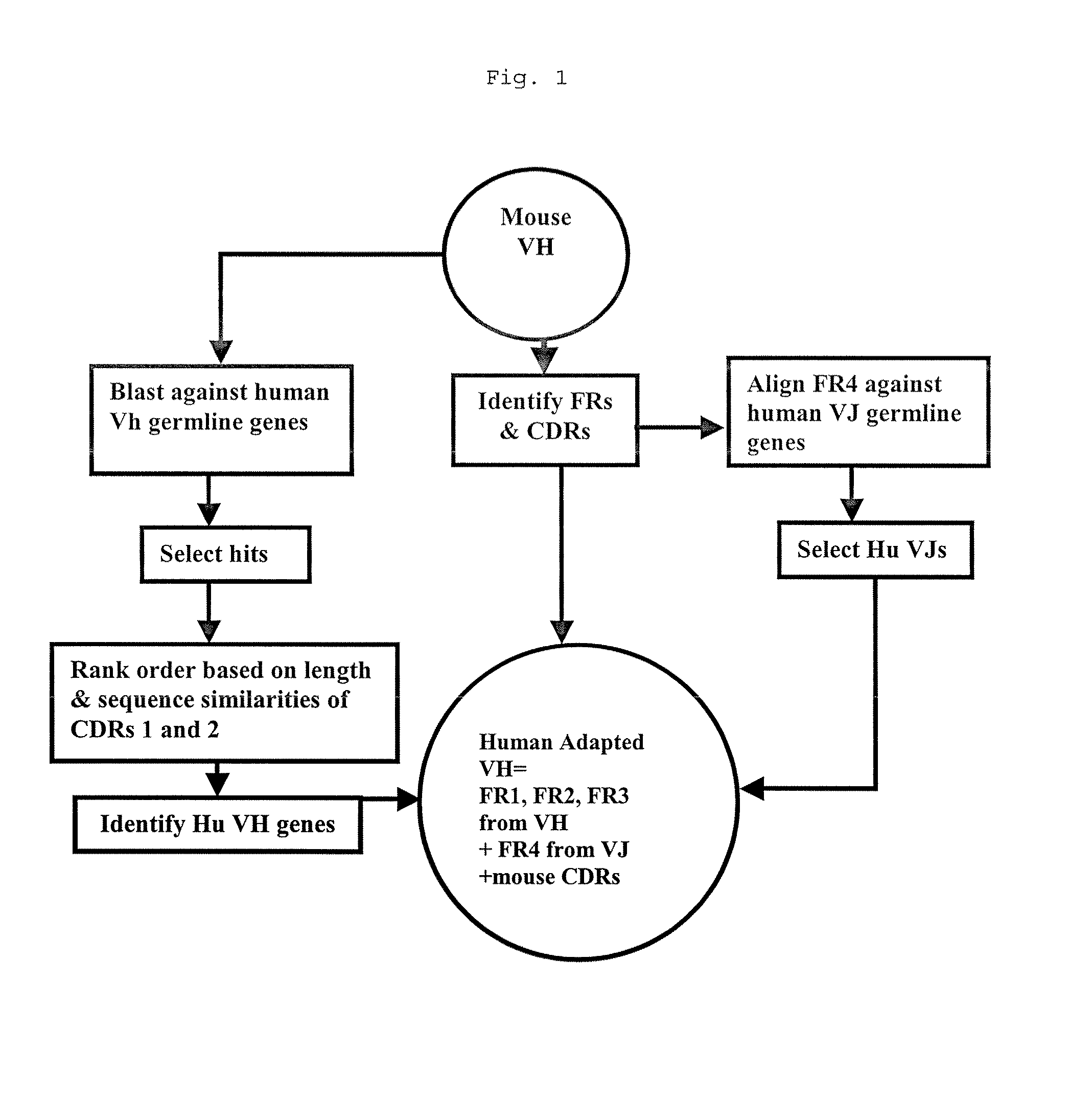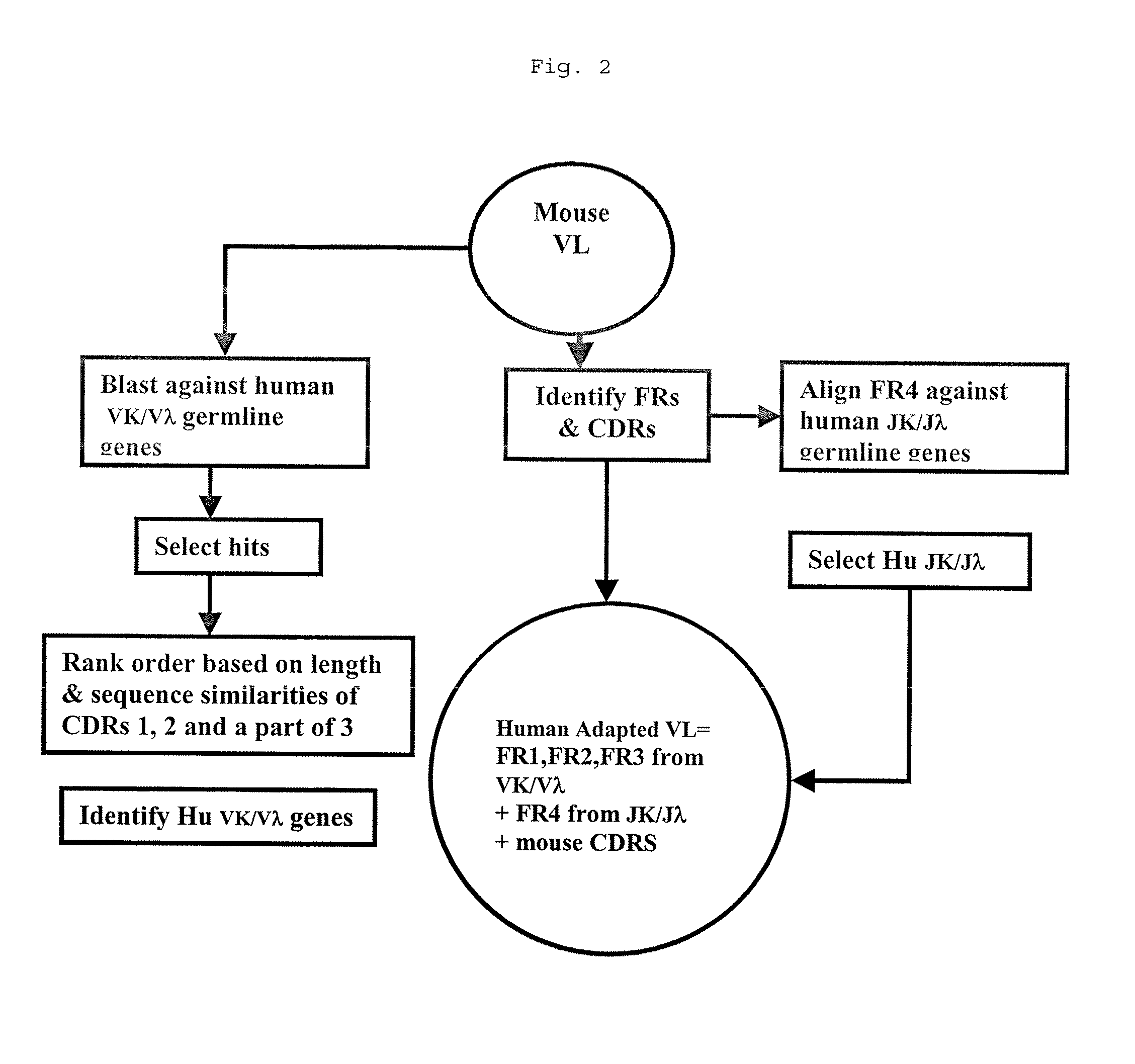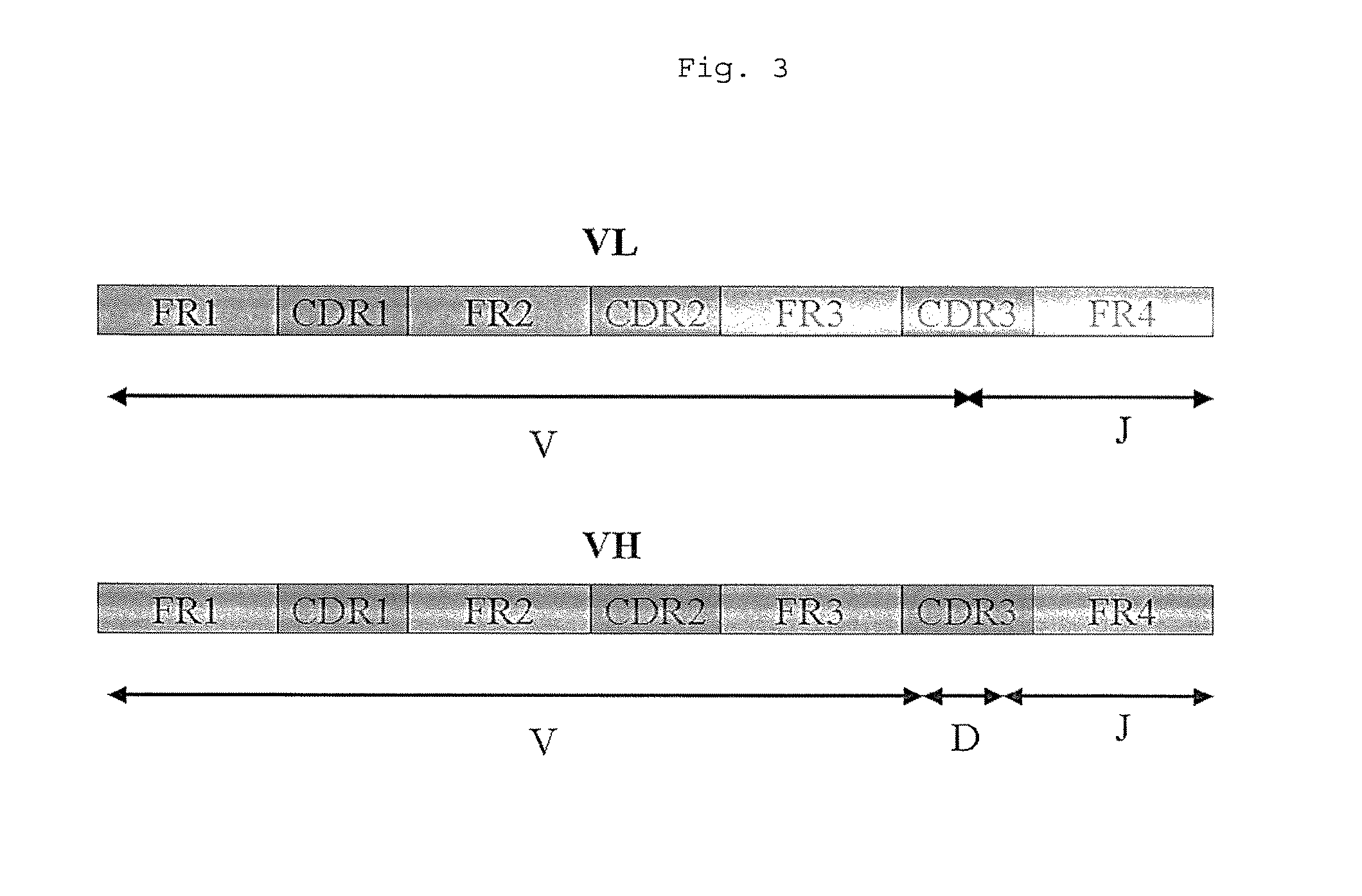Methods for use in human-adapting monoclonal antibodies
a monoclonal antibody and human-adaptive technology, applied in the field of human-adaptive monoclonal antibody use methods, can solve the problems of mathematical best-fit criteria, but not necessarily biological criteria, and the local fitness of different frs may be different, and the mathematical model has not yet been validated
- Summary
- Abstract
- Description
- Claims
- Application Information
AI Technical Summary
Problems solved by technology
Method used
Image
Examples
example 1
Human Adaptation of a Chimeric Monoclonal Antibody
[0090]Infliximab is a chimeric IgGκ monoclonal antibody with an approximate weight of 149 kDa. Infliximab binds specifically to human tumor necrosis factor alpha (TNFα) and is composed of human constant and murine variable regions (See FIGS. 16A & 16B of U.S. Pat. No. 5,656,272 for infliximab amino acid sequences (cA2)) and is sold under the tradename REMICADE®. Infliximab has a heavy chain variable region of 119 amino acids (SEQ ID NO: 1) and light chain variable region of 107 amino acids (SEQ ID NO: 2).
[0091]The method of the invention was applied to the infliximab heavy and light chain variable region sequences to select human germline VH and VL. The selected VH region is identical to human germline sequence VH3 3-72 and JH4. It is compared to infliximab framework regions in FIG. 5. The framework portion of the selected VL region, shown in FIG. 6, is identical to the human germline sequence VK1 A10 and JK3. The selected VH region ...
example 2
Human Adaptation of an Murine Monoclonal Antibody
[0095]The method of the invention was applied to a murine neutralizing Respiratory Syncytial Virus (RSV) F protein antibody designated anti-RSV 101F to select human germline VH and VL to construct the human-adapted anti-RSV antibody B21M. 101F antibody has a heavy chain variable region of 120 amino acids (SEQ ID NO: 3) and light chain variable region of 112 amino acids (SEQ ID NO: 4).
[0096]The framework of the selected VH region is identical to human germline sequence VB—2-05 and JH4. It is compared to the mouse anti-RSV F101 framework regions in FIG. 8. The selected VH region sequence was combined with a human constant chain P01857-IgG 1 (with V234A substitution). The framework of the selected VL region is identical to human germline sequence VB_B3 and JK1. It is compared to the mouse anti-RSV F101 framework regions in FIG. 9. The selected VL region sequence was combined with a human constant chain P01834-IgG k (with S227L substituti...
PUM
| Property | Measurement | Unit |
|---|---|---|
| weight | aaaaa | aaaaa |
| concentrations | aaaaa | aaaaa |
| concentrations | aaaaa | aaaaa |
Abstract
Description
Claims
Application Information
 Login to View More
Login to View More - R&D
- Intellectual Property
- Life Sciences
- Materials
- Tech Scout
- Unparalleled Data Quality
- Higher Quality Content
- 60% Fewer Hallucinations
Browse by: Latest US Patents, China's latest patents, Technical Efficacy Thesaurus, Application Domain, Technology Topic, Popular Technical Reports.
© 2025 PatSnap. All rights reserved.Legal|Privacy policy|Modern Slavery Act Transparency Statement|Sitemap|About US| Contact US: help@patsnap.com



